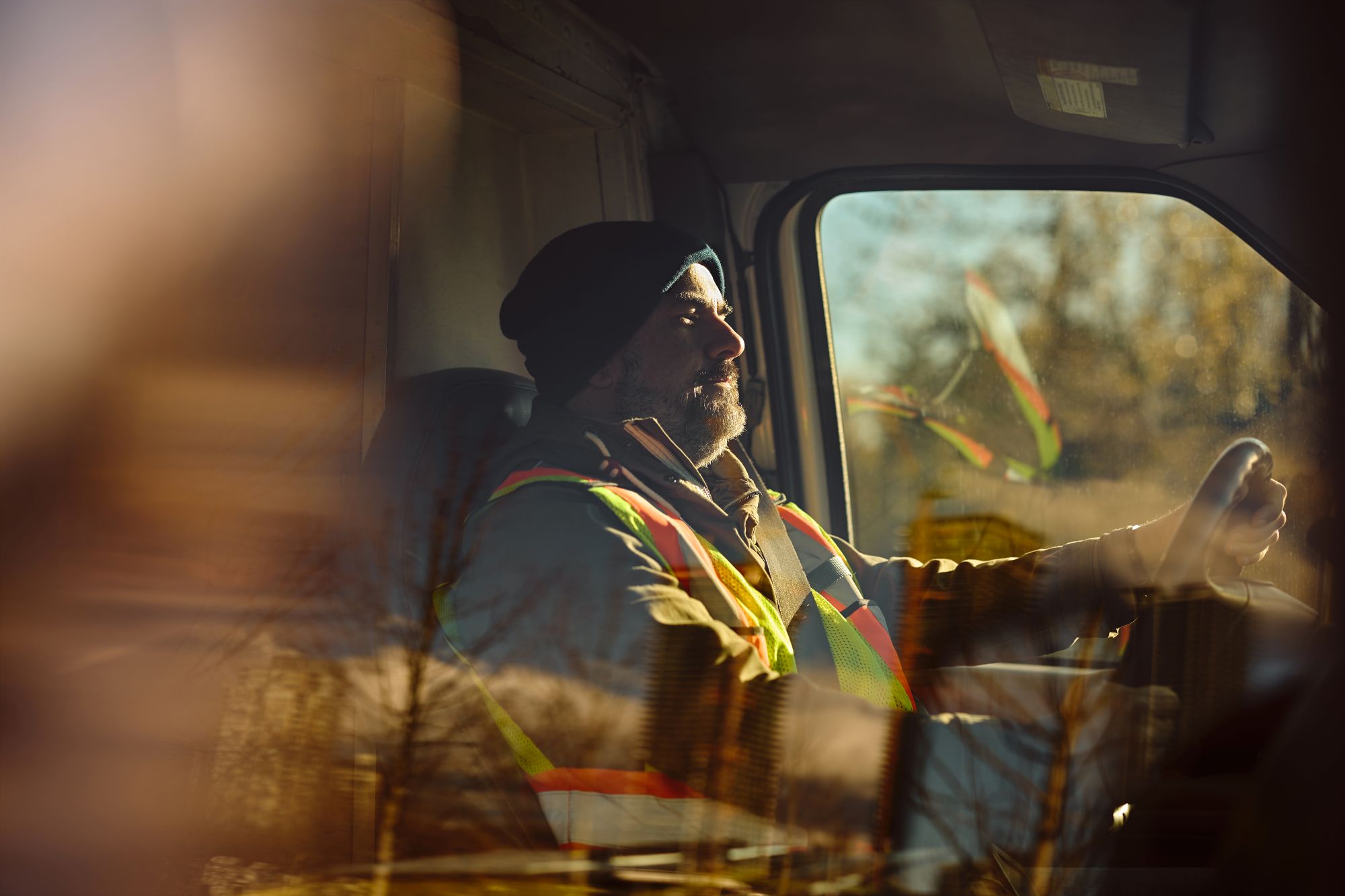
Guest
Boom-ul infrastructurii din România - Ce înseamnă acesta pentru sectorul mobilității
Creat: 22.09.2025
•
Actualizat: 22.09.2025
România se transformă rapid într-un nod logistic și de transport de marfă strategic în sud-estul Europei. Susținută de miliarde de euro din fonduri UE și naționale, renașterea infrastructurii țării atrage operatori de flote, investitori în logistică și producători. În acest articol, analizăm ce înseamnă aceste evoluții pentru flote, șoferi și sectorul transporturilor în general.
Infrastructura de transport a României a cunoscut o schimbare dramatică de ritm și amploare. Guvernul a alocat aproximativ 25 de miliarde de lei (4,27 miliarde de lire sterline) pentru proiecte rutiere în 2026, reflectând un accent fără precedent pe autostrăzi și coridoare de transport de marfă.
La jumătatea anului 2025, România avea aproximativ 1 325 km de autostrăzi în exploatare (1 188 km de autostrăzi și 138 km de drumuri expres), alți 741 km fiind în construcție și 669 km în faza de licitație.
Până în 2030, România intenționează să își dubleze rețeaua de autostrăzi, să modernizeze rutele feroviare strategice, să extindă transportul urban și să conecteze regiuni care au fost mult timp izolate. Provocarea este imensă, dar rezultatul ar putea transforma poziția țării pe harta europeană a transporturilor.
Printre proiectele-cheie se numără axa nord-sud A7, care se întinde de la Ploiești la Siret și care va facilita transportul până la granița cu Ucraina, a cărei finalizare este prevăzută pentru 2026. Un altul este un drum expres de 11 km care leagă Satu Mare de granița României cu Ungaria. Șoseaua de centură A0 a Bucureștiului va facilita traficul de mărfuri și pasageri în jurul capitalei, jumătatea sudică fiind deja utilizată. Alte lucrări majore includ coridoarele Suceava-Oar și Timișoara-Moravița, precum și tunelul Meseș de 2,9 km, care va deveni cel mai lung tunel rutier din România.
"Aceste coridoare nu vor îmbunătăți doar legăturile est-vest și nord-sud, ci vor conecta regiuni izolate anterior, precum Moldova și nord-estul țării, cu restul țării și cu UE", comentează Eduard Ularu, Business Development Manager la SNAP.
Dar infrastructura nu înseamnă doar drumuri. [Podul de la Brăila] (https://ec.europa.eu/regionalpolicy/whats-new/panorama/2023/07/19-07-2023-braila-bridge-a-great-leap-for-romania-and-the-euen) peste Dunăre, deschis în iulie 2023 la un cost de 500 de milioane EUR (363 de milioane EUR cofinanțate de UE), oferă prima trecere peste Dunărea maritimă și îmbunătățește semnificativ conectivitatea cu Constanța și Dobrogea.
Alte dezvoltări vitale includ modernizarea planificată a căii ferate în portul Constanța și extinderea de 130 de milioane de euro a capacității de containere și ro-ro a DP World România, care dublează producția și adaugă legături logistice rutiere și feroviare.
De ce este important
Piața de transport de marfă și logistică din România este considerabilă. Evaluată la aproximativ 21,11 miliarde USD în 2025, se estimează că va crește la 24,27 miliarde USD până în 2030. Între timp, numai segmentul transportului rutier de marfă este estimat la 9,07 miliarde USD în 2025, ajungând la 10,37 miliarde USD până în 2030.
Aceste cifre reflectă rolul tot mai important al României ca coridor transeuropean, deservind rutele din Ungaria, Bulgaria, Ucraina, Moldova și porturile de la Marea Neagră. Ucraina își direcționează în prezent o mare parte din [exporturile de cereale prin Constanța] (https://breakbulk.news/romanias-government-approves-railroad-upgrades-for-constanta-port/) pe coasta Mării Negre, vizând o dublare de la 2 milioane la 4 milioane de tone pe lună prin infrastructura românească.
"Aceste investiții vor ajuta România să concureze mai puternic cu marile centre logistice precum cele din Polonia și Grecia", comentează Eduard Ularu. "Constanța are un potențial uriaș și, cu infrastructura potrivită, poate deveni în sfârșit poarta de intrare pentru comerțul european care trebuia să fie."
Îmbunătățirea depozitării, scăderea costurilor cu forța de muncă și tendințele friend-shoring încurajează și mai mult producătorii și comercianții cu amănuntul să amplaseze centre logistice în România, sporind cererea pe drumuri și stimulând creșterea în întreaga rețea.

Dezvoltări digitale
Îmbunătățirile infrastructurii nu sunt doar fizice - ci și digitale. Pe măsură ce țara își extinde autostrăzile și coridoarele de transport de marfă, aceasta integrează sisteme inteligente concepute pentru a sprijini călătorii mai rapide, mai sigure și mai eficiente.
În întreaga rețea sunt instalate [instrumente inteligente de monitorizare a traficului] (https://www.itf-oecd.org/sites/default/files/docs/smart-use-roads_1.pdf), inclusiv senzori de cântărire în mișcare, bucle de trafic inductive și camere video de pe marginea drumurilor. Aceste sisteme vor alimenta în timp real centrele de control al traficului din orașe precum București, Brașov și Timișoara, ajutând autoritățile - și operatorii de flote - să reacționeze mai rapid la incidente și congestionări.
De asemenea, Bucureștiul [își modernizează infrastructura de semafoare] (https://urban-mobility-observatory.transport.ec.europa.eu/news-events/news/bucharest-continues-make-its-traffic-light-system-smarter-2023-02-27_en), folosind inteligența artificială și detectoare inteligente pentru a optimiza fluxurile de vehicule și a reduce blocajele. Acest lucru are implicații majore pentru operatorii de transport de marfă care navighează în zonele urbane dense, îmbunătățind fiabilitatea timpului de călătorie și reducând timpii morți.
La nivel național, România se orientează către [taxarea rutieră digitală] (hhttps://business-review.eu/business/transport-and-logistics/eltra-logis-the-new-tollro-road-charging-system-can-be-a-catalyst-for-fleet-renewal-285636). Noul sistem TollRO - a cărui lansare este planificată pentru 2026 - va înlocui actuala vinieta electronică cu un model de taxare bazat pe distanță și sensibil la emisii, în conformitate cu directivele UE. Această schimbare ar putea încuraja flotele mai puțin poluante și ar oferi o tarifare mai echitabilă pentru operatorii logistici care investesc în vehicule cu emisii reduse.
Pentru șoferi, aceasta înseamnă mai puține întârzieri, informații mai clare în timp real și condiții de drum mai receptive. Pentru operatori, este o șansă de a proiecta în viitor planificarea flotei, gestionarea rutelor și strategiile de sustenabilitate.
Impactul pentru flote și șoferi
Pentru flote și șoferi, modernizarea României aduce atât beneficii, cât și compromisuri. Poate cel mai important, este probabil să ducă la îmbunătățirea eficienței rețelei. Cu rute mai ușoare și coridoare mai rapide, investițiile sunt susceptibile de a reduce timpii de călătorie și mersul în gol. Drumurile naționale periculoase cu o singură bandă vor fi înlocuite treptat cu autostrăzi mai sigure și mai rapide. Acest lucru va crește productivitatea și va reduce, de asemenea, timpul petrecut de șoferi la volan.
Cu toate acestea, nu totul este pozitiv. Lucrările în curs de desfășurare pe autostrăzi precum A7 și A8 pot cauza întârzieri și modificări de traseu în timpul lucrărilor. De asemenea, ar putea însemna o creștere a volumului de mărfuri (în special la Constanța și la punctele de trecere a frontierei), ceea ce ar putea supune la presiune infrastructura existentă.
"În momentul de față, zone de construcție precum DN2 și părți din șoseaua de centură A0 București provoacă devieri și blocaje", explică Ularu. "Camioanele pierd ore întregi pe rute care ar trebui să dureze câteva minute - iar acest lucru afectează totul, de la bugetele de combustibil la fiabilitatea livrărilor."
În plus, noile coridoare, normele de siguranță mai stricte și schimbarea taxelor de utilizare a drumurilor necesită o atenție sporită în ceea ce privește conformitatea.
Sprijinirea bunăstării conducătorilor auto în timpul tranziției
În ciuda progreselor înregistrate la nivelul infrastructurii, parcările de odihnă sigure și facilitățile de bunăstare rămân lacunare pe unele coridoare de transport de marfă, în special în apropierea zonelor de frontieră și a marilor noduri. Zonele de construcție nu dispun adesea de zone de așteptare oficiale, lăsând șoferii expuși și fără locuri de odihnă.
"Încă mai vedem opriri periculoase și zone de staționare supraaglomerate pe rutele cheie de transport de marfă", spune Eduard. "Autostrăzile moderne vor aduce zone de servicii și de odihnă dedicate la fiecare 30-50 de kilometri, dotate cu stații de alimentare, magazine și restaurante. Pentru șoferi, acest lucru înseamnă locuri de parcare mai sigure, cu iluminare adecvată, supraveghere CCTV și zone de odihnă sigure care reduc riscul de furt. Facilitățile sanitare precum dușurile și toaletele curate - o raritate pe drumurile naționale - vor deveni în sfârșit o normă."
SNAP abordează această lacună prin intermediul hărții sale interactive a parcărilor din România. Șoferii pot localiza cu ușurință parcări sigure și de încredere pentru camioane, pot rezerva locuri în avans, acolo unde sunt disponibile, și pot planifica rute mai sigure prin intermediul hărții SNAP.
Planificați o călătorie prin România? Folosiți harta SNAP pentru a găsi parcări sigure, adaptate șoferilor, de-a lungul rutelor cheie de transport de marfă.
Aspectul durabilității
Acest proces de modernizare a infrastructurii joacă, de asemenea, un rol-cheie în facilitarea unei logistici mai ecologice. Cu un flux mai bun al traficului, vor exista niveluri mai scăzute de emisii cauzate de vehiculele inactive și de condusul în regim stop-start.
De asemenea, vor fi modernizate coridoarele de transport pentru a sprijini noile infrastructuri de realimentare cu hidrogen și vehicule electrice, reducând astfel dependența de combustibilii fosili.
O regiune în mișcare
Investițiile în infrastructură din România marchează o schimbare fundamentală pentru transportul de marfă și mobilitatea în Europa de Sud-Est. Pentru flote, acest lucru se traduce prin coridoare mai rapide, o capacitate logistică mai mare și volume mai mari de comerț, dar și o examinare mai atentă a bunăstării, conformității și rezilienței.
În calitate de lider al industriei orientat spre viitor, SNAP pledează pentru operațiuni bine informate, planificare flexibilă a rutelor și instrumente orientate către șoferi care sprijină atât siguranța, cât și eficiența. România nu numai că se modernizează, ci și remodelează modul în care mărfurile circulă în regiune.
"Nu este vorba doar despre drumuri - este vorba despre reziliență, durabilitate și construirea unui viitor mai inteligent al transportului de marfă în întreaga Europă. România se află chiar în centrul acestei schimbări", afirmă Eduard.



